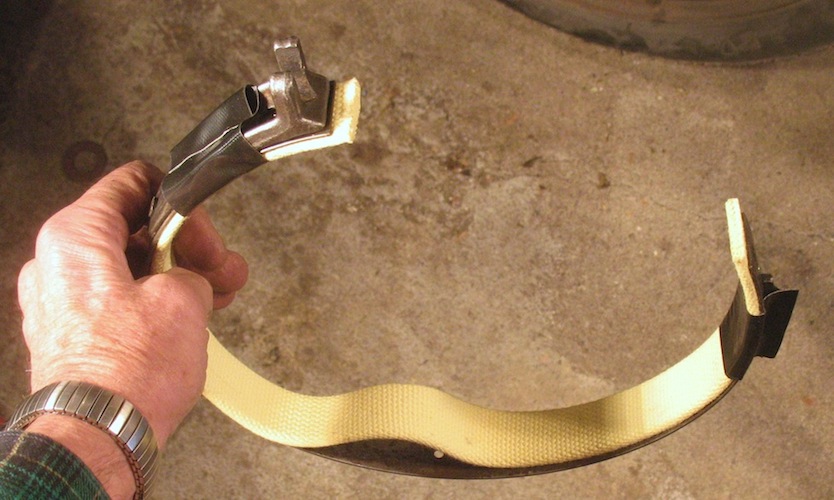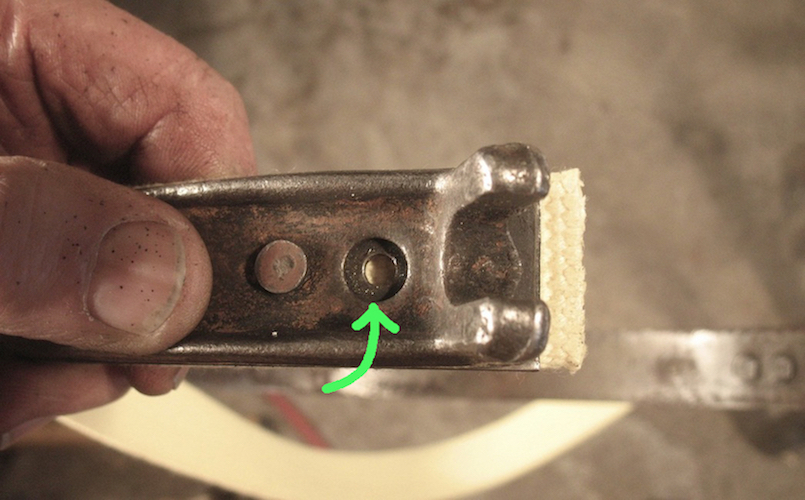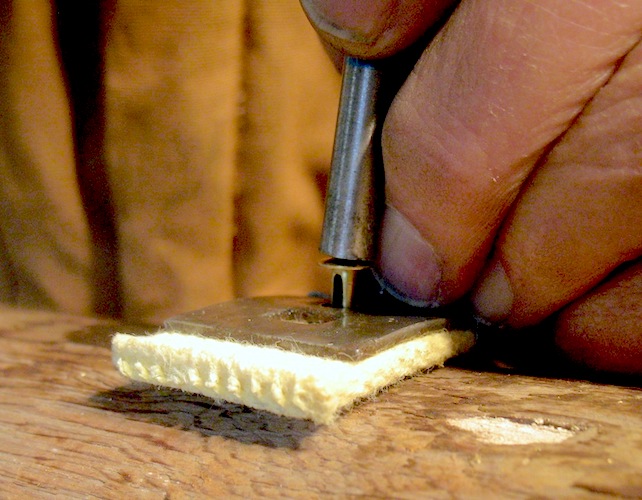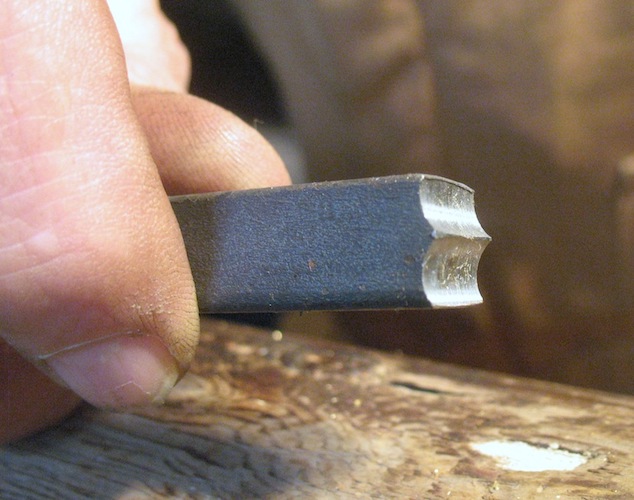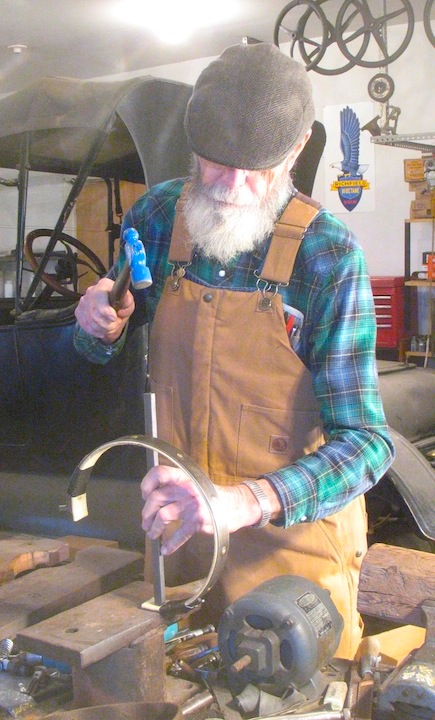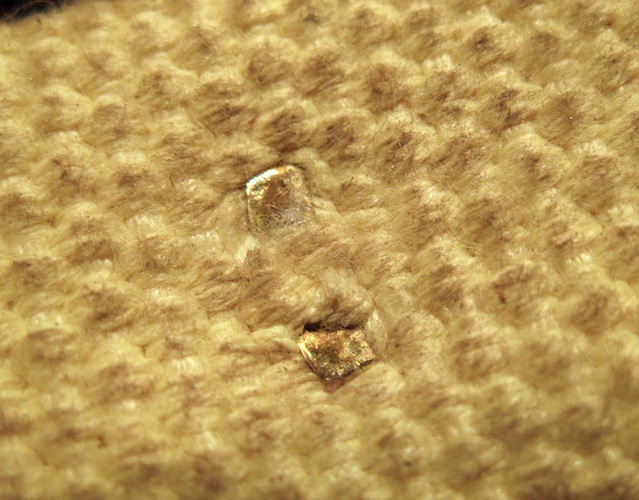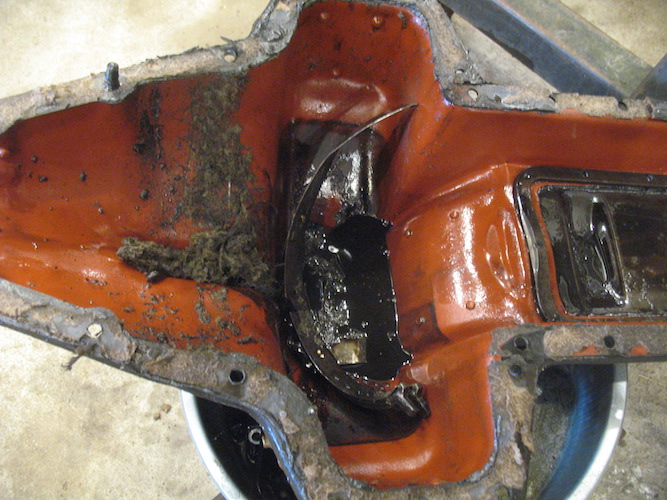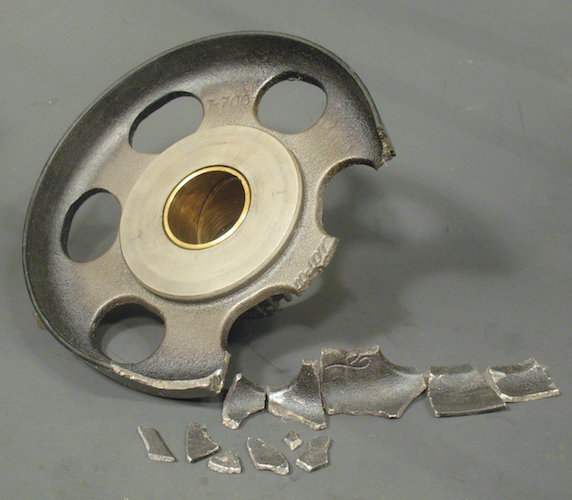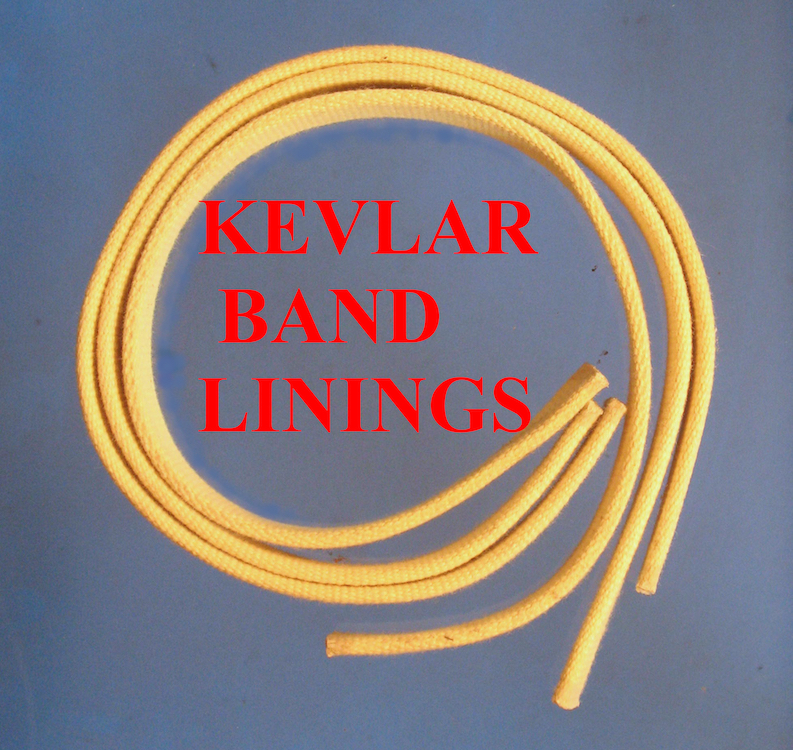
The Model T transmission is unlike any other. When you are cruising in high gear (direct drive) the whole transmission is spinning along with the engine crankshaft, flywheel, and drive shaft. In effect it's just a linkage between the engine and the drive shaft. When you step on the low and reverse pedals, magic happens. The low pedal contracts the low band, which grabs the low drum and stops it from spinning. That forces the triple gears to turn, and they turn the drive train in low gear. The reverse pedal contracts the reverse band, which grabs the reverse drum and stops it from spinning. That forces the triple gears to turn, and they turn the drive train in reverse. The brake pedal contracts the brake band, which grabs the brake drum, which is attached to the output shaft so that it stops the drive shaft from turning. Of course that stops the wheels from turning. All three bands — reverse, low, and brake — are lined with a material that prevents the metal of the band from damaging the metal of the drum. Your Model T came from the factory with cotton linings in its transmission bands. In the past century some other materials have been used for band linings. In recent years the available linings have been cotton, wood, and Kevlar. That last material is a modern synthetic fiber. When used for woven band linings it has the advantage of being more durable than cotton and wood.
Is there a downside to Kevlar linings? Yes and no. Properly installed and used, they will give decades of trouble-free service. Poorly installed or wrongly used, they can do serious and expensive damage to your transmission. When two surfaces rub together (drum and band lining) there is friction, and friction makes heat. Too much heat will crack a cast iron transmission drum and eventually break it.
